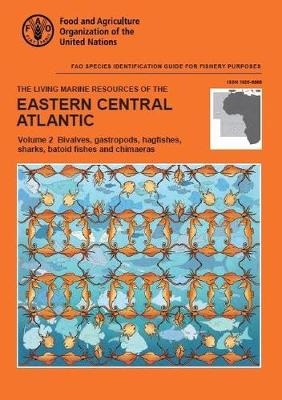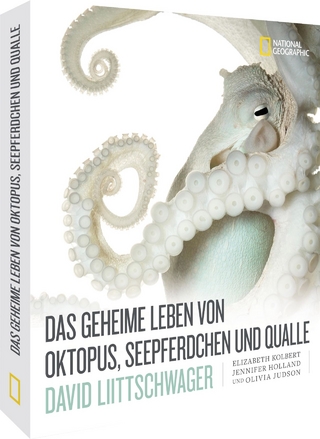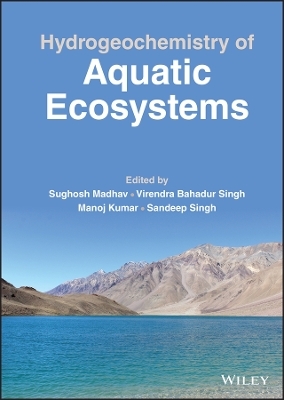
The living marine resources of the Western Central Atlantic
Vol. 2: Bivalves, gastropods, hagfishes, sharks, batoid fishes, and chimaeras
2017
Food & Agriculture Organization of the United Nations (FAO) (Verlag)
978-92-5-109264-4 (ISBN)
Food & Agriculture Organization of the United Nations (FAO) (Verlag)
978-92-5-109264-4 (ISBN)
- Titel z.Zt. nicht lieferbar
- Versandkostenfrei innerhalb Deutschlands
- Auch auf Rechnung
- Verfügbarkeit in der Filiale vor Ort prüfen
- Artikel merken
These multivolume field guides cover species of interest to fisheries in the Eastern Central Atlantic. The introductory chapter outlines the environmental, ecological, and biogeographical factors influencing the marine biota, and the basic components of the fisheries in the area. Sections on the resource groups are arranged phylogenetically according to higher taxonomic levels.
This multivolume field guide covers the species of interest to fisheries of the major marine resource groups exploited in the Eastern Central Atlantic. The area of coverage includes FAO fishing area 34 and part of 47. The marine resource groups included are bivalves, gastropods, chitons, cephalopods, stomatopods, shrimps, lobsters, crabs, hagfishes, sharks, batoid fishes, chimaeras, bony fishes and sea turtles. The introductory chapter outlines the environmental, ecological, and biogeographical factors influencing the marine biota, and the basic components of the fisheries in the Eastern Central Atlantic. Within the field guide, the sections on the re source groups are arranged phylogenetically according to higher taxonomic levels such as class, order, and family. Each resource group is introduced by general re marks on the group, an illustrated section on technical terms and measurements, and a key or guide to orders or families. Each family generally has an account summarizing family diagnostic characters, bi o logical and fisheries in formation, notes on similar families occur ring in the area, a key to species, a check list of species, and a short list of relevant literature. Families that are less important to fisheries include an abbreviated family ac count and no de tailed species in formation. Species in the important families are treated in detail (arranged alphabetically by genus and species) and include the species name, frequent synonyms and names of similar species, an illustration, FAO common name(s), diagnostic characters, biology and fisheries in formation, notes on geo graphical distribution, and a distribution map. For less important species, abbreviated accounts are used. Generally, this includes the species name, FAO common name(s), an illustration, a distribution map, and notes on biology, fisheries, and distribution. Each volume concludes with its own index of scientific and common names.
This multivolume field guide covers the species of interest to fisheries of the major marine resource groups exploited in the Eastern Central Atlantic. The area of coverage includes FAO fishing area 34 and part of 47. The marine resource groups included are bivalves, gastropods, chitons, cephalopods, stomatopods, shrimps, lobsters, crabs, hagfishes, sharks, batoid fishes, chimaeras, bony fishes and sea turtles. The introductory chapter outlines the environmental, ecological, and biogeographical factors influencing the marine biota, and the basic components of the fisheries in the Eastern Central Atlantic. Within the field guide, the sections on the re source groups are arranged phylogenetically according to higher taxonomic levels such as class, order, and family. Each resource group is introduced by general re marks on the group, an illustrated section on technical terms and measurements, and a key or guide to orders or families. Each family generally has an account summarizing family diagnostic characters, bi o logical and fisheries in formation, notes on similar families occur ring in the area, a key to species, a check list of species, and a short list of relevant literature. Families that are less important to fisheries include an abbreviated family ac count and no de tailed species in formation. Species in the important families are treated in detail (arranged alphabetically by genus and species) and include the species name, frequent synonyms and names of similar species, an illustration, FAO common name(s), diagnostic characters, biology and fisheries in formation, notes on geo graphical distribution, and a distribution map. For less important species, abbreviated accounts are used. Generally, this includes the species name, FAO common name(s), an illustration, a distribution map, and notes on biology, fisheries, and distribution. Each volume concludes with its own index of scientific and common names.
| Erscheinungsdatum | 31.12.2016 |
|---|---|
| Reihe/Serie | FAO species identification guide for fishery purposes |
| Zusatzinfo | xiv, p. 666-1509 figs (some col.) |
| Verlagsort | Rome |
| Sprache | englisch |
| Themenwelt | Naturwissenschaften ► Biologie ► Limnologie / Meeresbiologie |
| Naturwissenschaften ► Biologie ► Ökologie / Naturschutz | |
| Weitere Fachgebiete ► Land- / Forstwirtschaft / Fischerei | |
| ISBN-10 | 92-5-109264-8 / 9251092648 |
| ISBN-13 | 978-92-5-109264-4 / 9789251092644 |
| Zustand | Neuware |
| Haben Sie eine Frage zum Produkt? |
Mehr entdecken
aus dem Bereich
aus dem Bereich
Naturerfahrungen zwischen Quelle, See und Wildfluss
Buch | Hardcover (2024)
Verlag Anton Pustet Salzburg
30,00 €
Buch | Hardcover (2022)
National Geographic Deutschland (Verlag)
39,99 €


